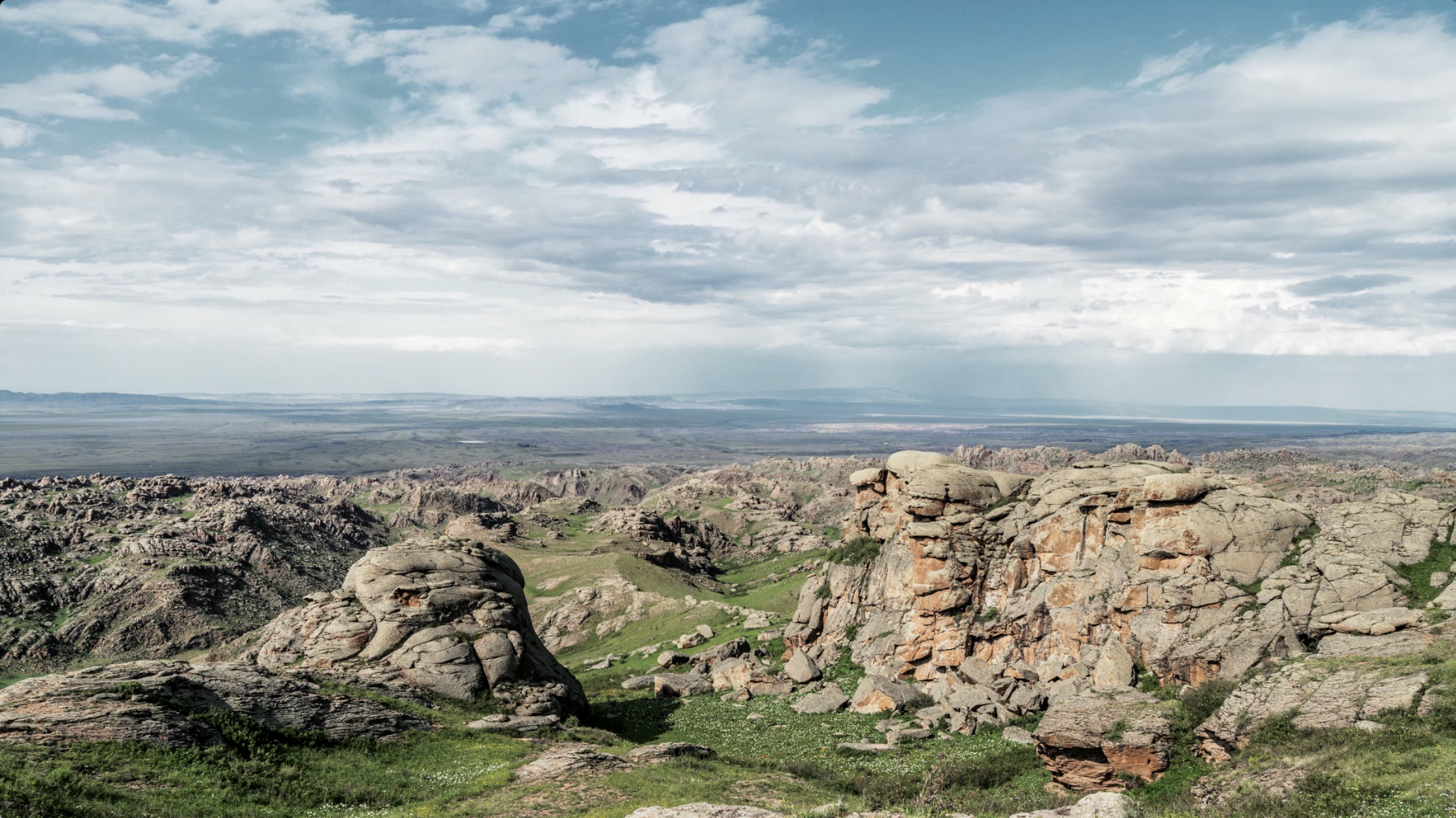

At the north margin of Junggar Basin, Jeminay County in northwest China's Xinjiang Uygur Autonomous Region boasts an array of spectacular landforms, ranging from peculiar-looking stones on the meadow to magnificent glaciers on the mountain.
At the foot of Sawuer Mountain, the oddly shaped granite that has been eroded by wind for millions of years spreads all over the vast grassland. In Kazakh, this natural stone museum is called "kuoyitasi", meaning "a place with stones like sheep". The stone city, about 40 kilometers away from Jeminay County, is home to cute Altai marmots and wild globeflowers. Although the place looks like a no man's land in the outer space, archaeological study has shown human activities here around 40,000 to 50,000 years ago.
At the altitude of 3,835 meters, the peak of Sawuer Mountain, the Muz Taw glacier, is covered with snow all year round with a breathtaking scenery significantly different from the grassland below. The melting snow of glaciers forms several rivers and lakes, nurturing the whole region around Sawuer Mountain.
CGTN Nature film crew is currently filming around Jeminay County. Watch the video to explore this mysterious place known by few people.
(Cover image and video provided by CGTN Nature film crew.)
(If you want to contribute and have specific expertise, please contact us at nature@cgtn.com)

Copyright © 2018 CGTN. Beijing ICP prepared NO.16065310-3
Copyright © 2018 CGTN. Beijing ICP prepared NO.16065310-3